- Home
- Tom Clancy
Into the Storm: On the Ground in Iraq Page 3
Into the Storm: On the Ground in Iraq Read online
Page 3
The troops were mentally ready, and they were trained to a razor's edge. During the weeks before combat, they had trained hard to adapt their tactics to the desert and to practice their tasks. They also had been in combat against Iraqis. During the two weeks prior to the attack, Franks had wanted some actual fighting in order to get his forces mentally ready to fight, as well as to conduct feints to deceive the Iraqis as to the actual point of attack, and to destroy artillery in range of the breach site. As a result, the artillery and aviation of every major maneuver unit in VII Corps had by now participated in a combat action against Iraqi frontline units.
TIME
The timing of the attack was clear. They would attack the day after tomorrow at G+1 at BMNT.
Franks's best commander's estimate was that the whole operation would take about eight days: two days to get through non-Guards Iraqi forces and the 150 to 200 kilometers to the Guards themselves, four days to destroy the Guards, and two days for consolidation. The Third Army estimate had been two weeks for the ground offensive and another four for consolidation.
THAT was the METT-T situation facing Fred Franks as he sat in his sleeping shelter, gazing out the opening to the now-quiet life of the main command post.
It was a very familiar scene. It was the Army's practice to use three command posts, called the "tactical," "main," and "rear" posts, depending on their closeness to the enemy. The close--or immediate--battle was led using the tactical command post as a base of operations; the rear post directed all the logistics or combat service support of the unit; and the main command post kept track of the immediate fight and the deeper fight beyond that one, and planned the battles to be fought in the future. At the main command post, all three command activities were normally fully coordinated, as was air support. The main command post was also the link to higher headquarters, both for operational matters as well as for intelligence--all downlink terminals were located there, which brought direct theater or national intelligence system "feed" to the unit.
Franks pictured the main CP in front of him--essentially, a large camp-site with tents and truck vans. The area of the CP covered about 500 meters in diameter and perhaps a kilometer in circumference. The entire area was behind a circular, ten-foot-high berm of sand shoved up by Corps engineers. About ten feet outside the berm was triple-strand concertina barbed wire arranged triple-thick and piled in tightly tangled coils. At regular intervals around this berm were six-by-six-foot bunkers, with up to two feet of overhead cover. These were manned by armed soldiers with communication to a central post commanded by the HQ battalion commander.
There was only one entrance to the command post area. To get in, you had to identify yourself to military police, who would pull the temporary sliding wire barrier out of the way, and then you had to drive down a serpentine course past high mounds of sand. Only a few vehicles were permitted inside, and these were directed to a parking area just inside the entrance. There all personnel would dismount and walk to wherever they needed to go. To allow much vehicle traffic inside the CP was to stir up so much sand that it was harmful to the equipment, plus it wasn't safe at night with no lights, and it made life unbearable for the troops. Most vehicles parked outside, and their occupants walked to their destination. Troops manning the entrance could spot vehicles approaching from a long distance.
Inside the perimeter, the truck vans were arranged according to their individual function: Staff elements were located close to other staff elements with whom they needed to coordinate. For example, intelligence and operations were always next to each other, and Air Force air, corps artillery, and Army aviation stayed close together.
These truck vans were what the U.S. Army called "expando vans," like Franks's own sleeping shelter. They were five-ton trucks with a steel enclosure on the back. When the vehicle was stationary, this could be "expanded" by about two feet on each side, thus increasing the work area. The inside of these vans took on various physical configurations depending on their function. Inside dimensions were about twenty by fifteen feet, and they were prewired, so that when you stopped you could plug in cables and have lights. In other words, they were essentially portable offices.
At the main CP were about a thousand soldiers and perhaps two hundred vehicles. Because of the time needed to install long-haul communications for both intelligence and command, and because of the network of cables and wires that had to be hooked up to provide electronic networking capability between these vans, it was not very physically agile.
The picture of a high-tech CP Franks's unit was not. Patton or Bradley would have been right at home here. They used paper maps with hand-drawn symbols on acetate coverings to depict boundaries, phase lines, and objectives, the usual control measures for a corps. They used line-of-sight radios and longer-haul comms that were the equivalent of radio telephones to reach Riyadh or the United States. They used commercial fax machines to transmit hard copies of small papers. For larger acetate overlays, they drew them one at a time and sent them via land or air courier to subordinate units. They had computers for analysis, word processing, and especially intelligence. But in the end, the central focus of all the friendly and enemy information was a paper map posted by hand, not a large-screen computer monitor. It was around that map that they held their discussions, and where Franks made whatever decisions he made in the CP and where he gave guidance.
During the war, Franks would not stay in the main CP, but in the smaller, more mobile TAC CP closer to the fight. He wanted to be up front, where he'd have a more precise feel for the battle.
In Riyadh as well, the battle was tracked on paper maps. In order for information about friendly and enemy units to be accurately and timely posted on those maps, the staff had to rely on voice phone calls and written situation reports that were hours old. In such a setup, where there was no automatic and simultaneous electronic updating of these common situational displays, you had a built-in prescription for misunderstanding.
EARLIER THAT DAY
Franks let his attention stray back over the events of the day, and especially his visits to the units.
He had gone all around the corps talking to commanders, looking soldiers in the eye, shaking their hands, banging them on the back, handing out VII Corps coins, saying a few words, such as "good to go," "good luck," "trust your leaders, we've got a great scheme of maneuver here," "the Iraqis will never know what hit them." And he had called out a "JAYHAWK" or two.
He wanted to show confidence and to get a sense of the electricity going through the units. And he found to be true what he had reported to Secretary Cheney and General Powell on 9 February in the final briefing in Riyadh: "VII Corps is ready to fight." Soldiers were all pumped up. There was some of the usual "kick their ass" type of thing, "the Iraqis are messing with the wrong guys." Soldier-to-soldier chatter.
For the most part, the troops and leaders were going about their work with an air of quiet professionalism. They were doing small things that count, such as cleaning weapons, checking fuel, checking oil in their vehicles, and doing a little maintenance on their vehicles.
During his visits with commanders that day, Franks had talked about some of the pieces of the attack maneuver. Though by this time they had been over the basic maneuver many times, he wanted to review some of the details again. For example, he wanted to look over the coordination between the 1st Armored Division coming up on the left of the 2nd Cavalry. That is, he wanted to review how the 2nd Cavalry, which was initially covering--in front of--both the 1st AD and 3rd AD, would uncover the 1st AD--get out from in front of them--so that 1st AD could dash forward to al-Busayyah, which was their initial objective (called Objective Purple), about 140 kilometers from the attack start point.
He had also talked to Major General Gene Daniel, his deputy, about the task force headquarters that Daniel would head up at the breach. Since the 1st Infantry Division, the British, the Corps logistics elements, two Corps artillery brigades, and perhaps the 1st Cavalry Division had to p
ass through the breach, he needed a commander there who could make sure that process went without letup, and who could make the necessary adjustments on the spot. (The 1st Cavalry Division was the theater reserve; it was expected--but not certain--that this division would be added to the VII Corps attack.)
And he went to visit the 1st CAV again. His intention had been to attend the memorial service for two soldiers killed on 20 February during division actions in the Ruqi Pocket,3 but because of GPS navigation problems (not that unusual in a helicopter), he hadn't arrived at the division until the service was over. However, he was still able to stay around and talk to the troops and commanders. It had been an emotional moment, visiting soldiers who had just lost friends in combat. He knew well that death in combat is sudden and usually unexpected, even though you know it will happen. And he was reminded again of the inner steel required of soldiers and leaders. Soldiers were speaking in soft tones about the action. While they were clearly touched by the loss of their buddies, they were not about to back off. They were ready to go again.
He drew two lessons from the firsthand accounts he heard of the action that morning: First, the 1st CAV was able to strike back hard with a combinationof ground maneuver, artillery, and air and severely punish the Iraqis. Second, the Iraqis could deliver heavy and accurate fires if you happened to drive into their predetermined defensive area.
At the 1st Infantry Division, he visited Colonel Bert Maggart's first brigade. Maggart, his commanders, and his brigade staff gave him a thorough briefing on their attack plans in their TAC command post (three M577s parked side by side with canvas extensions off the back to form a small twenty-five-by-thirty-foot work area). They needed no notes or references. They had been over it many times before. Their soldiers were keyed up, ready to go; plans for the attack were set and rehearsed; soldiers had confidence in their leaders and their ability to accomplish the mission. You could see it in their eyes. You could hear it in their voices. Because there had been lots of predictions about the timing of the attack, the troops were getting a little impatient with all the fits and starts. By now they wanted to get into it and finish it and go home.
He found the same attitude in both the 3rd and the 1st Armored Divisions. "We're trained, we know what to do," troopers told him again and again. And he, too, was saying the same thing again and again: "We're ready, we're tough, we're trained. Just look out for each other, follow your leaders, and know what the hell you're doing." He got quick status reports from both division commanders.
At the 1st Armored Division, the spirit of one unit especially touched him, and he spent the better part of an hour with them. They were a Bradley platoon, the 1st Platoon, Company C, 1st Battalion, 7th Infantry, 3rd Brigade, 3rd Infantry Division. They called themselves "Raiders" and their motto was "Get some." The platoon leader was First Lieutenant Doug Morse, and the platoon sergeant was Staff Sergeant Jamie Narramore. They were ready and tough and not without a sense of humor. They had composed a song and sang it for him, a profane description of how tough they were and what they were about to do to the Iraqis. He wasn't sure how they had done it, but they had put every cussword he knew in there. "Thanks for not court-martialing us," Sergeant Narramore told him afterward. They had even gotten him to sign his name on a Bradley for good luck, and Franks and the twenty-eight platoon members had posed for a team picture. After the war, just before they got on the plane to go home, Franks and the Raiders had a mini-reunion; they told him some war stories. They had not had anyone wounded or killed in the action. He still has the Raiders picture on his wall at home.
Some of the leaders were going through last-minute rock drills when he visited. In a "rock drill," leaders go out in the sand and mark out a piece of ground with white engineer tape to make a scaled replica of their actual anticipated battle area. Then, using rocks as unit icons, they move the rocks to show how they plan to move their units in relationship to one another, the terrain, and the enemy.
Based on what he'd seen in Vietnam, the troops were in about the right frame of mind and keyed up properly. In Vietnam, another generation of American soldiers had gone across half the world to do what their country had asked; and tactically they'd done it as well as any other generation of American combat soldiers could. But this time it was going to end differently. They all would see to that.
REFLECTIONS
Franks was proud of his VII Corps team. After looking back over the day's visits, he thought again about trust--and made a quick inventory of what he needed to do to fulfill that trust.
He had gone over his "commander's intent" with his commanders a number of times. This is the concise expression of how you visualize the operation, and it is always written by the commander personally. In the absence of specific orders, it could be used as operating guidelines. By now he thought it was clear and well understood. It read,
I intend to conduct a swift series of attacks to destroy RGFC and minimize our own casualties. Speed, tempo, and a coordinated air/land campaign are key. I want Iraqi forces to move so that we can attack them throughout the depth of their formations by fire, maneuver, and air. The first phases of our operation will be deliberate and rehearsed, the latter will be more METT-T dependent. We will conduct a deliberate breach with precision and synchronization, resulting from precise targeting and continuous rehearsals. Once through the breach, I intend to defeat forces to the east rapidly, with one division as economy of force, and to pass three divisions and ACR as point of main effort to the west of that action, to destroy RGFC in a fast-moving battle with zones of action and agile forces attacking by fire, maneuver, and air. CSS must keep up, because I intend no pauses. We must strike hard and continually and finish rapidly.
Franks then turned his attention to a specific skill: the ability to picture operations in his head, and to judge time/distance factors to get the right units in the right combination at the right place at the right time. Franks called this "orchestrating" the battle. How would we do? How would his commanders?
The Army had given Franks lots of opportunities to practice and develop this skill, from platoon leader to corps commander. That training and some excellent mentors had a lot to do with the honing of his ability, as had the crucible of Vietnam. But it was not only a matter of practice and experience; it also had to do with the way the brain worked--with imagination.
All he knew was that somehow he could see a battle clearly in his head, relate the physical and soldier pieces together, and figure how long it would take a division, for example, to turn three brigades ninety degrees, or to mark twenty-four lanes of a minefield breach, or to close an artillery brigade on a moving division, or to close three divisions on a common objective.
Some commanders were better than others at orchestrating a battle. For some it was a learned skill; for others it came more easily. For the conduct of battle they were about to wage, it was indispensable. But Franks felt all his commanders had it. He had had the opportunity to make his own judgments about all of them during their time together these past few months.
At Third Army he trusted John Yeosock. Even though he had not commanded a corps, Yeosock understood all this, as did his G-3, Brigadier General Steve Arnold. Senior to them, Franks was not quite sure. He was never sure, especially at CENTCOM in the basement of the MOD building in Riyadh, how VII Corps maneuvers would be interpreted. As it happened, the perception there of what it would take to maneuver this large, multidivision, 146,000-soldier armored corps in a coordinated attack of over 200 kilometers was very different from how it was on the scene in Iraq and Kuwait. This difference in perception would lead to controversies later.
Allied to this last issue was a communications matter that did not concern him then--CENTCOM HQ's picture of both the enemy and friendly situation. In light of later events, he realized it should have.
Would their picture be the same as his own? Would his main command post (itself many kilometers from his location and the battle) be able to track the battle close enough to keep
Third Army informed and to accurately write the required daily commander's situation reports? And then would this information get passed accurately to CENTCOM? Would J-3 (CENTCOM operations) even pay attention to what a single corps was doing? Or would that get rolled up in a big picture? Would CENTCOM be aware of the normal time-info lag of ground operations reports and situational displays? And then would they ask for an update before making decisions critical to ground ops? Where would Franks's higher commanders choose to locate themselves during the conduct of the ground war? Would they come forward into Iraq, where he would be in order to get a firsthand feel for the fight? And, finally, should he talk to Schwarzkopf during the war? Or should he communicate primarily with his immediate commander, John Yeosock?

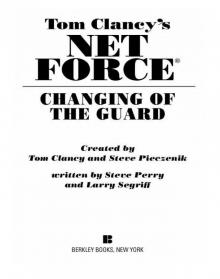 Changing of the Guard
Changing of the Guard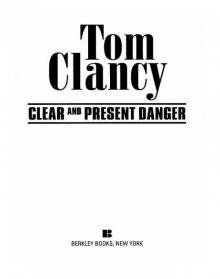 Clear and Present Danger
Clear and Present Danger Hounds of Rome
Hounds of Rome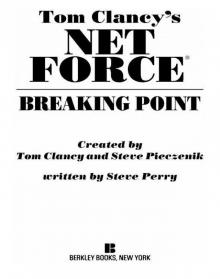 Breaking Point
Breaking Point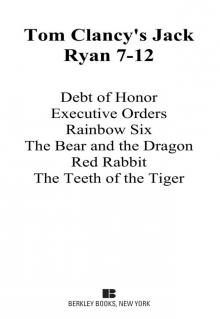 Tom Clancy's Jack Ryan Books 7-12
Tom Clancy's Jack Ryan Books 7-12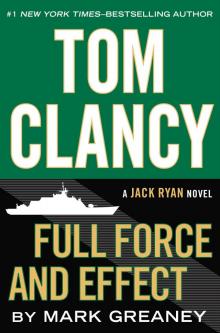 Full Force and Effect
Full Force and Effect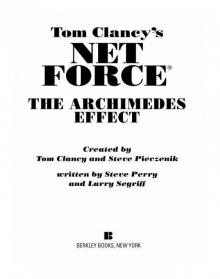 The Archimedes Effect
The Archimedes Effect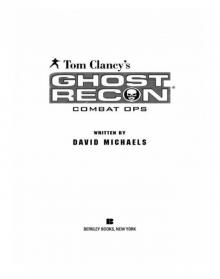 Combat Ops
Combat Ops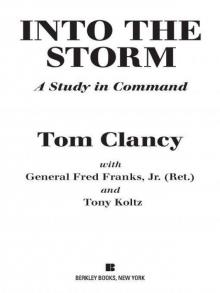 Into the Storm: On the Ground in Iraq
Into the Storm: On the Ground in Iraq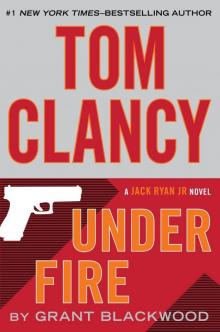 Under Fire
Under Fire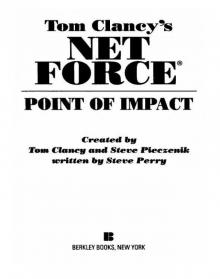 Point of Impact
Point of Impact Red Rabbit
Red Rabbit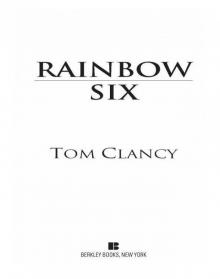 Rainbow Six
Rainbow Six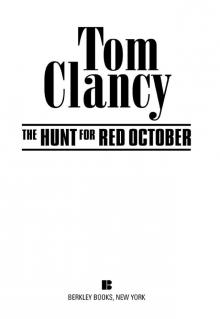 The Hunt for Red October
The Hunt for Red October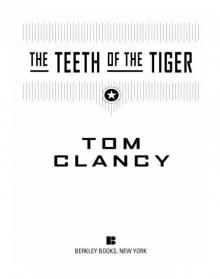 The Teeth of the Tiger
The Teeth of the Tiger Conviction (2009)
Conviction (2009)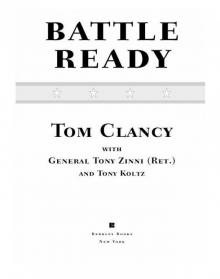 Battle Ready
Battle Ready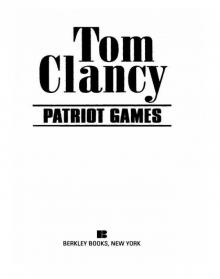 Patriot Games
Patriot Games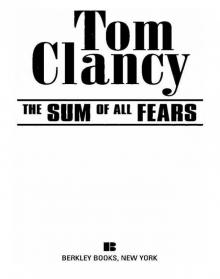 The Sum of All Fears
The Sum of All Fears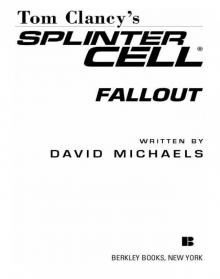 Fallout (2007)
Fallout (2007) Red Storm Rising
Red Storm Rising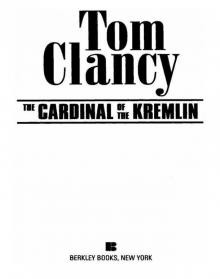 The Cardinal of the Kremlin
The Cardinal of the Kremlin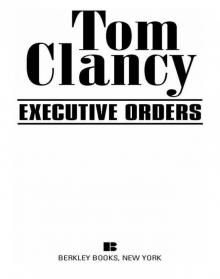 Executive Orders
Executive Orders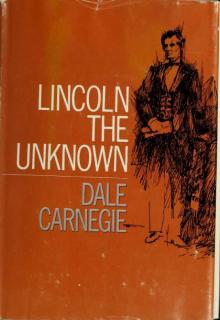 Lincoln, the unknown
Lincoln, the unknown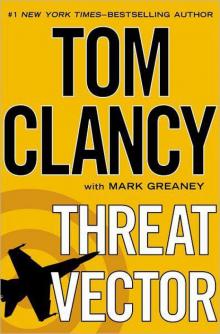 Threat Vector
Threat Vector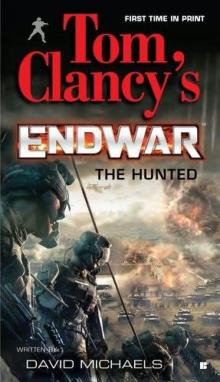 The Hunted
The Hunted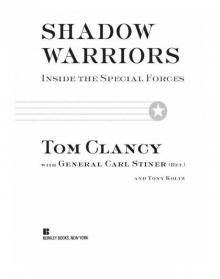 Shadow Warriors: Inside the Special Forces
Shadow Warriors: Inside the Special Forces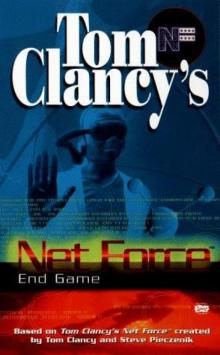 End Game
End Game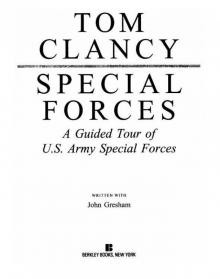 Special Forces: A Guided Tour of U.S. Army Special Forces
Special Forces: A Guided Tour of U.S. Army Special Forces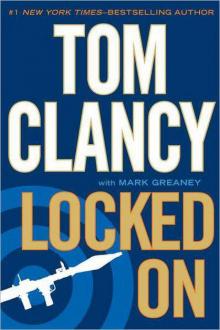 Locked On
Locked On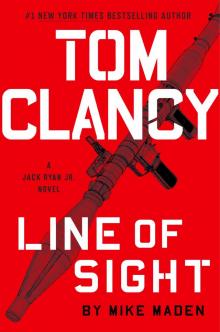 Line of Sight
Line of Sight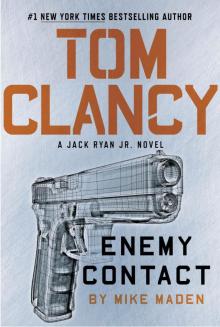 Tom Clancy Enemy Contact - Mike Maden
Tom Clancy Enemy Contact - Mike Maden Fighter Wing: A Guided Tour of an Air Force Combat Wing
Fighter Wing: A Guided Tour of an Air Force Combat Wing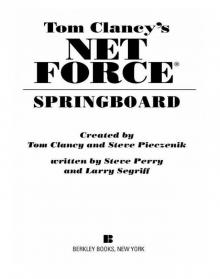 Springboard
Springboard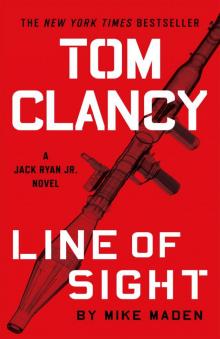 Line of Sight - Mike Maden
Line of Sight - Mike Maden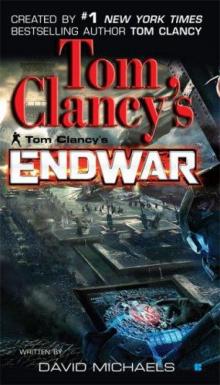 EndWar
EndWar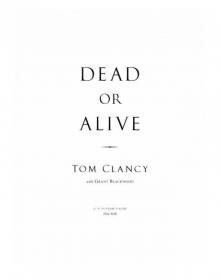 Dead or Alive
Dead or Alive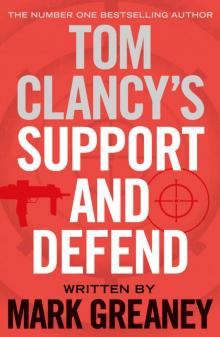 Tom Clancy Support and Defend
Tom Clancy Support and Defend Checkmate
Checkmate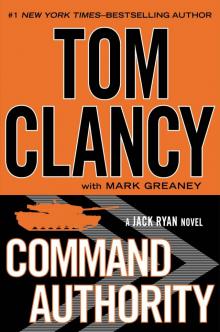 Command Authority
Command Authority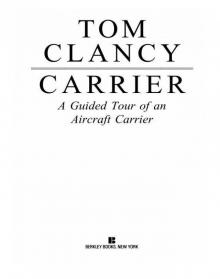 Carrier: A Guided Tour of an Aircraft Carrier
Carrier: A Guided Tour of an Aircraft Carrier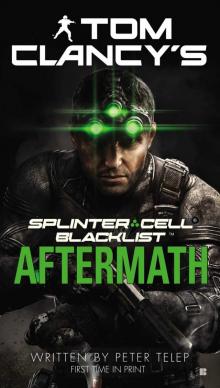 Blacklist Aftermath
Blacklist Aftermath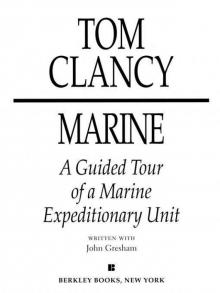 Marine: A Guided Tour of a Marine Expeditionary Unit
Marine: A Guided Tour of a Marine Expeditionary Unit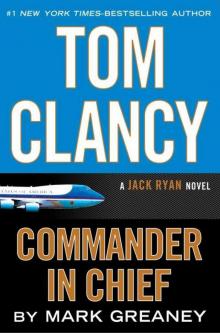 Commander-In-Chief
Commander-In-Chief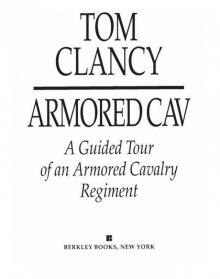 Armored Cav: A Guided Tour of an Armored Cavalry Regiment
Armored Cav: A Guided Tour of an Armored Cavalry Regiment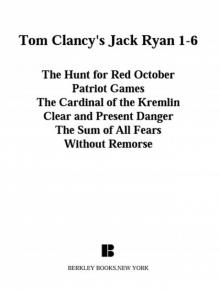 Tom Clancy's Jack Ryan Books 1-6
Tom Clancy's Jack Ryan Books 1-6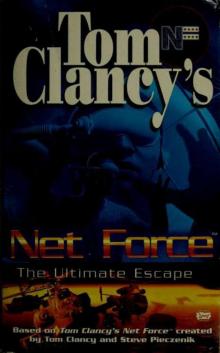 The Ultimate Escape
The Ultimate Escape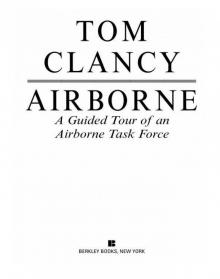 Airborne: A Guided Tour of an Airborne Task Force
Airborne: A Guided Tour of an Airborne Task Force Debt of Honor
Debt of Honor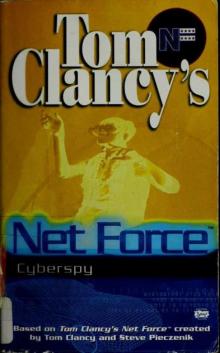 Cyberspy
Cyberspy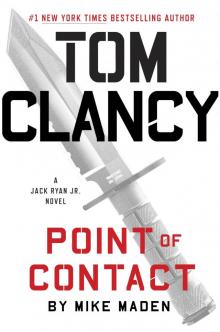 Point of Contact
Point of Contact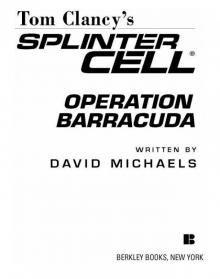 Operation Barracuda (2005)
Operation Barracuda (2005)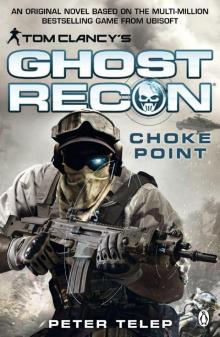 Choke Point
Choke Point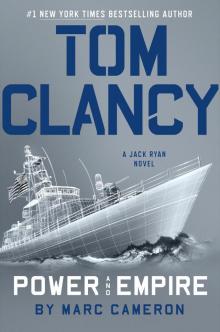 Power and Empire
Power and Empire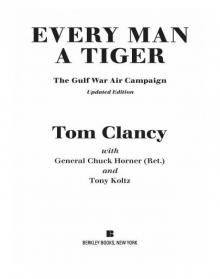 Every Man a Tiger: The Gulf War Air Campaign
Every Man a Tiger: The Gulf War Air Campaign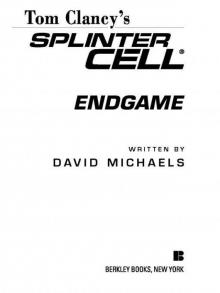 Endgame (1998)
Endgame (1998)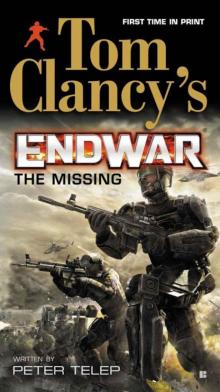 EndWar: The Missing
EndWar: The Missing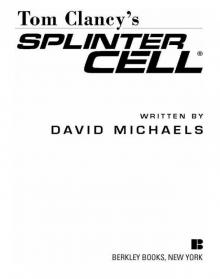 Splinter Cell (2004)
Splinter Cell (2004)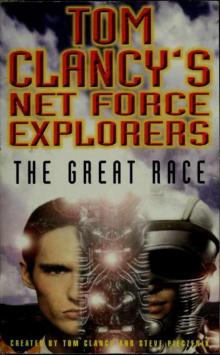 The Great Race
The Great Race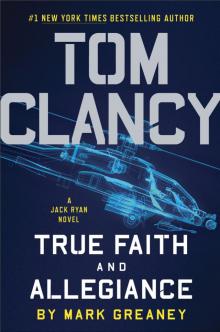 True Faith and Allegiance
True Faith and Allegiance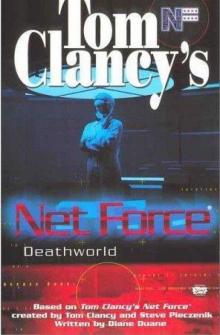 Deathworld
Deathworld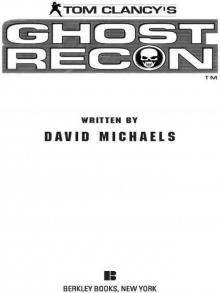 Ghost Recon (2008)
Ghost Recon (2008)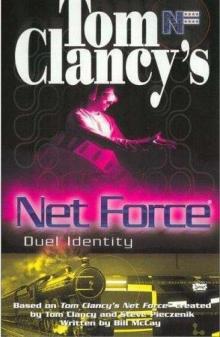 Duel Identity
Duel Identity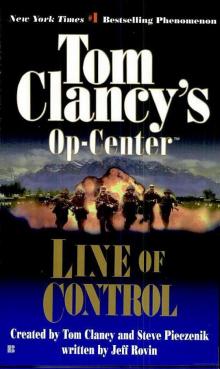 Line of Control o-8
Line of Control o-8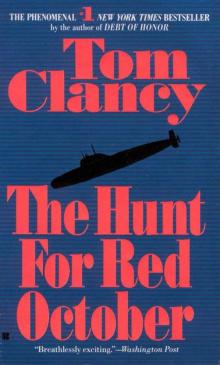 The Hunt for Red October jr-3
The Hunt for Red October jr-3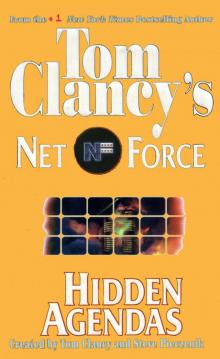 Hidden Agendas nf-2
Hidden Agendas nf-2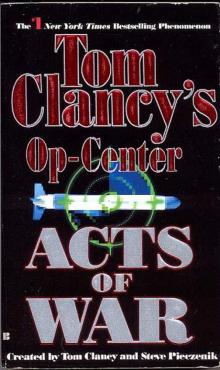 Acts of War oc-4
Acts of War oc-4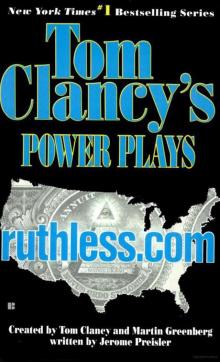 Ruthless.Com pp-2
Ruthless.Com pp-2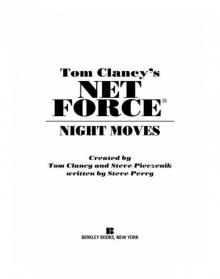 Night Moves
Night Moves The Hounds of Rome - Mystery of a Fugitive Priest
The Hounds of Rome - Mystery of a Fugitive Priest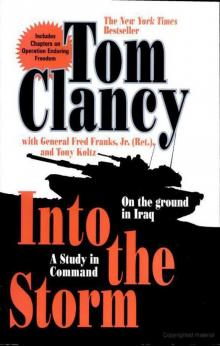 Into the Storm: On the Ground in Iraq sic-1
Into the Storm: On the Ground in Iraq sic-1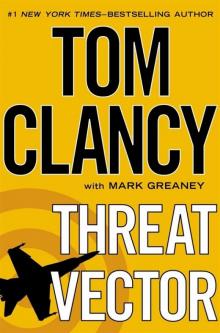 Threat Vector jrj-4
Threat Vector jrj-4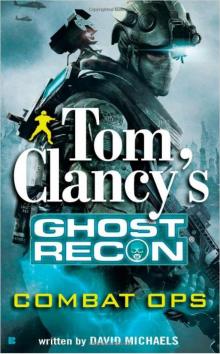 Combat Ops gr-2
Combat Ops gr-2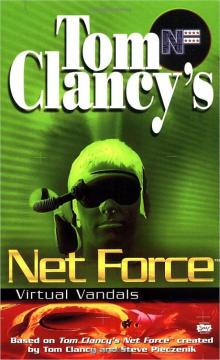 Virtual Vandals nfe-1
Virtual Vandals nfe-1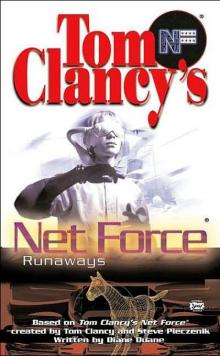 Runaways nfe-16
Runaways nfe-16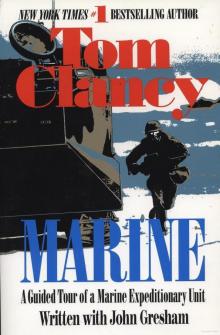 Marine: A Guided Tour of a Marine Expeditionary Unit tcml-4
Marine: A Guided Tour of a Marine Expeditionary Unit tcml-4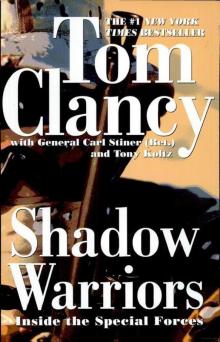 Shadow Warriors: Inside the Special Forces sic-3
Shadow Warriors: Inside the Special Forces sic-3 Jack Ryan Books 1-6
Jack Ryan Books 1-6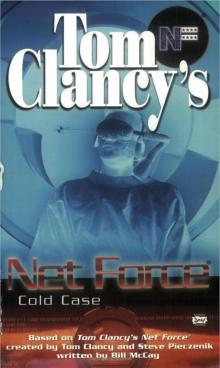 Cold Case nfe-15
Cold Case nfe-15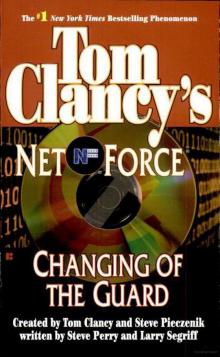 Changing of the Guard nf-8
Changing of the Guard nf-8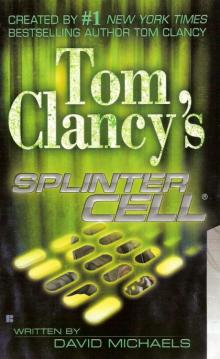 Splinter Cell sc-1
Splinter Cell sc-1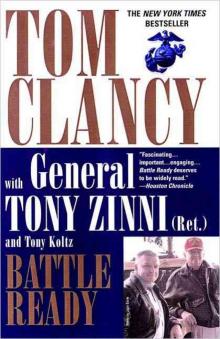 Battle Ready sic-4
Battle Ready sic-4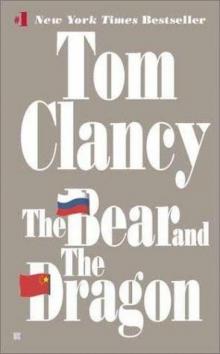 The Bear and the Dragon jrao-11
The Bear and the Dragon jrao-11 Fighter Wing: A Guided Tour of an Air Force Combat Wing tcml-3
Fighter Wing: A Guided Tour of an Air Force Combat Wing tcml-3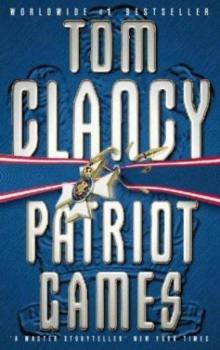 Patriot Games jr-1
Patriot Games jr-1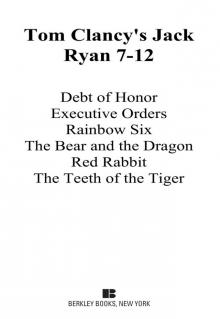 Jack Ryan Books 7-12
Jack Ryan Books 7-12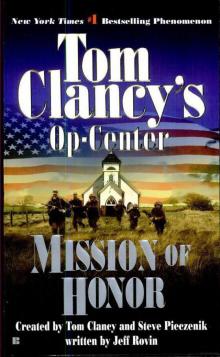 Mission of Honor o-9
Mission of Honor o-9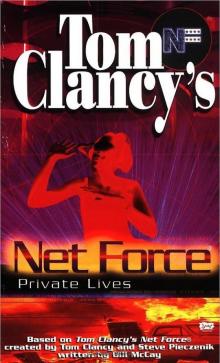 Private Lives nfe-9
Private Lives nfe-9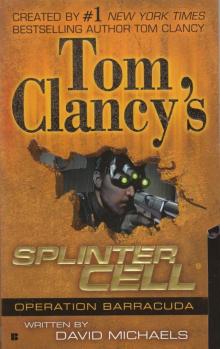 Operation Barracuda sc-2
Operation Barracuda sc-2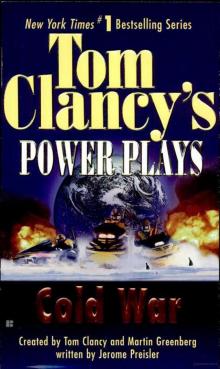 Cold War pp-5
Cold War pp-5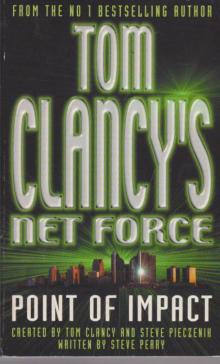 Point of Impact nf-5
Point of Impact nf-5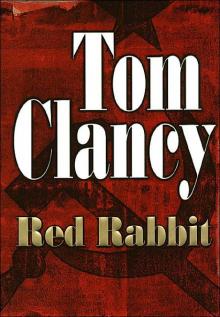 Red Rabbit jr-9
Red Rabbit jr-9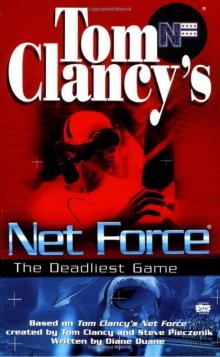 The Deadliest Game nfe-2
The Deadliest Game nfe-2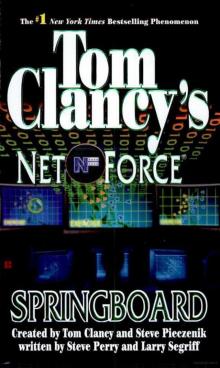 Springboard nf-9
Springboard nf-9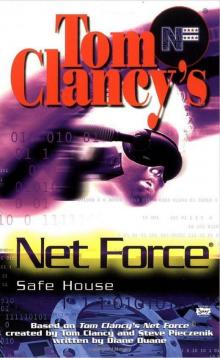 Safe House nfe-10
Safe House nfe-10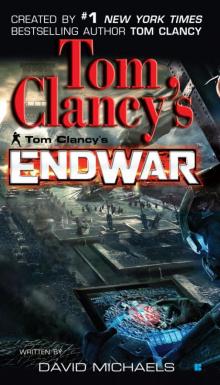 EndWar e-1
EndWar e-1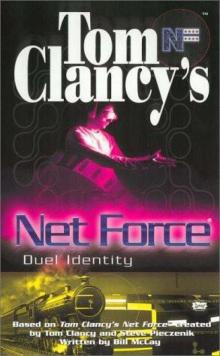 Duel Identity nfe-12
Duel Identity nfe-12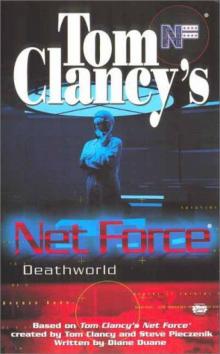 Deathworld nfe-13
Deathworld nfe-13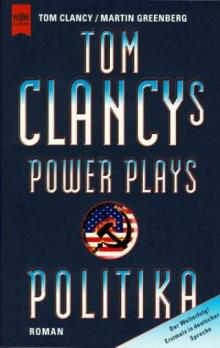 Politika pp-1
Politika pp-1 Rainbow Six jr-9
Rainbow Six jr-9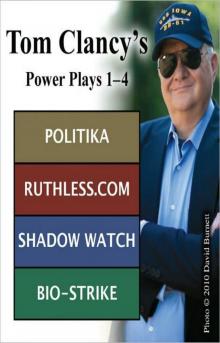 Tom Clancy's Power Plays 1 - 4
Tom Clancy's Power Plays 1 - 4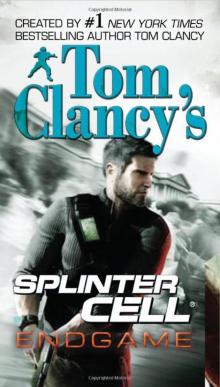 Endgame sc-6
Endgame sc-6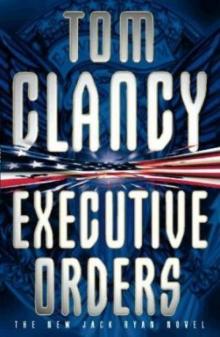 Executive Orders jr-7
Executive Orders jr-7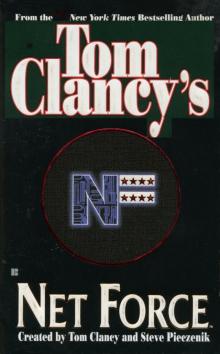 Net Force nf-1
Net Force nf-1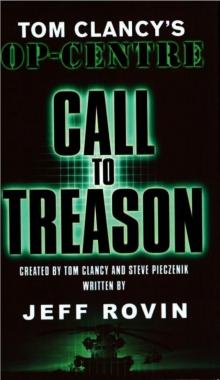 Call to Treason o-11
Call to Treason o-11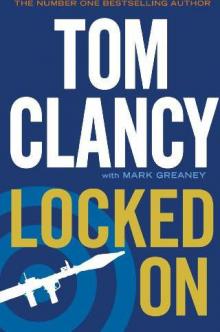 Locked On jrj-3
Locked On jrj-3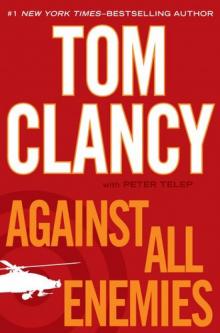 Against All Enemies
Against All Enemies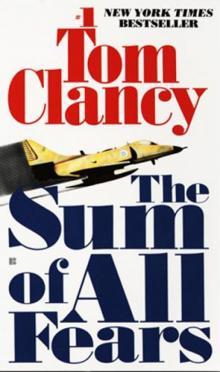 The Sum of All Fears jr-7
The Sum of All Fears jr-7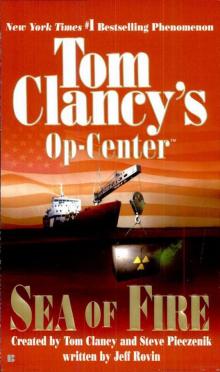 Sea of Fire o-10
Sea of Fire o-10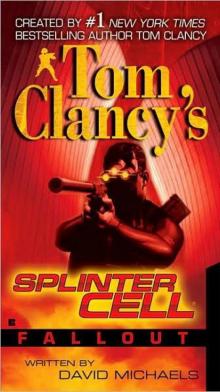 Fallout sc-4
Fallout sc-4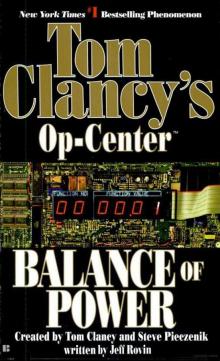 Balance of Power o-5
Balance of Power o-5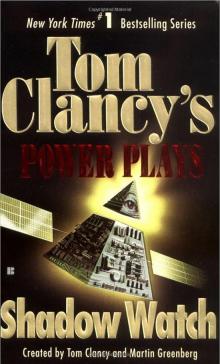 Shadow Watch pp-3
Shadow Watch pp-3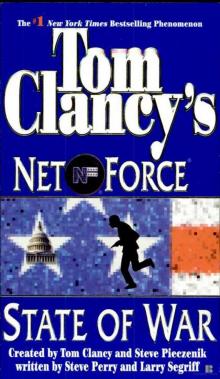 State of War nf-7
State of War nf-7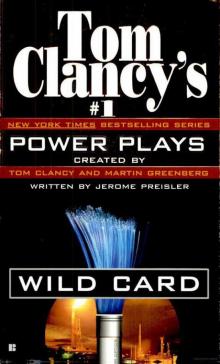 Wild Card pp-8
Wild Card pp-8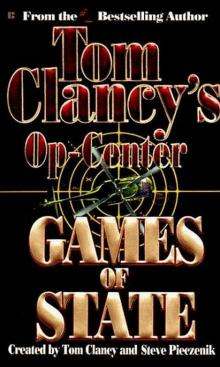 Games of State o-3
Games of State o-3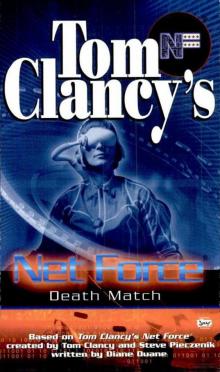 Death Match nfe-18
Death Match nfe-18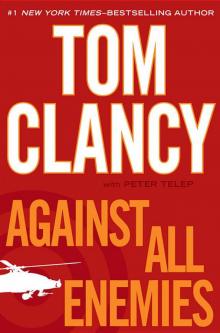 Against All Enemies mm-1
Against All Enemies mm-1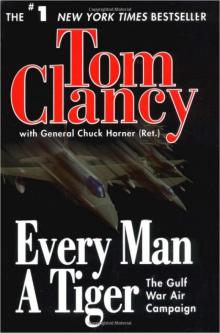 Every Man a Tiger: The Gulf War Air Campaign sic-2
Every Man a Tiger: The Gulf War Air Campaign sic-2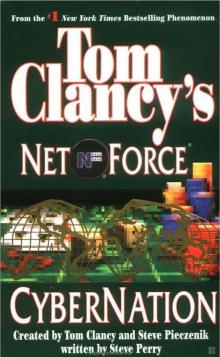 Cybernation nf-6
Cybernation nf-6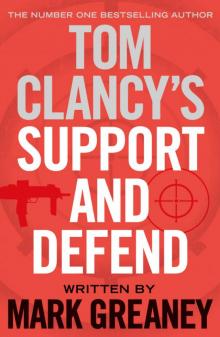 Support and Defend
Support and Defend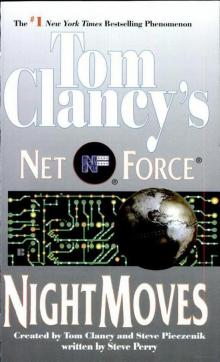 Night Moves nf-3
Night Moves nf-3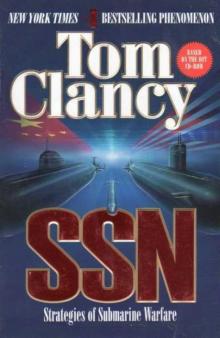 SSN
SSN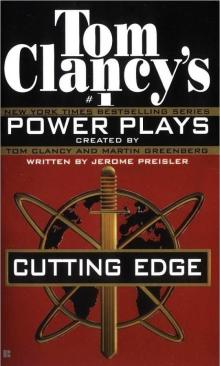 Cutting Edge pp-6
Cutting Edge pp-6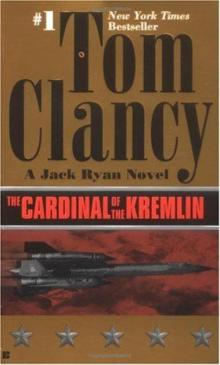 The Cardinal of the Kremlin jrao-5
The Cardinal of the Kremlin jrao-5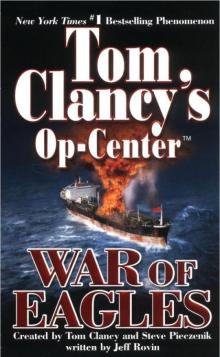 War of Eagles o-12
War of Eagles o-12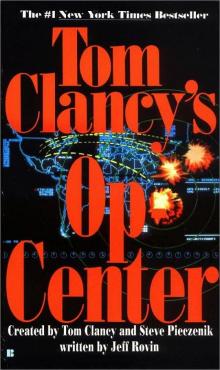 Op-Center o-1
Op-Center o-1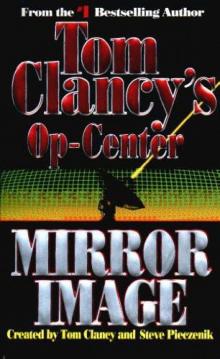 Mirror Image o-2
Mirror Image o-2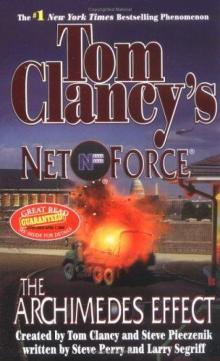 The Archimedes Effect nf-10
The Archimedes Effect nf-10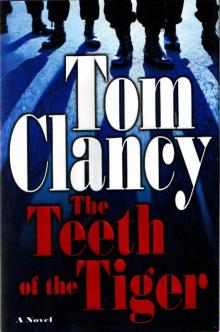 Teeth of the Tiger jrj-1
Teeth of the Tiger jrj-1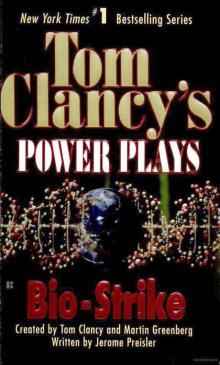 Bio-Strike pp-4
Bio-Strike pp-4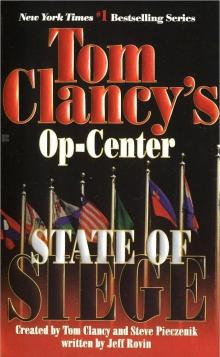 State of Siege o-6
State of Siege o-6 Debt of Honor jr-6
Debt of Honor jr-6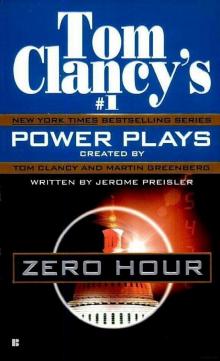 Zero Hour pp-7
Zero Hour pp-7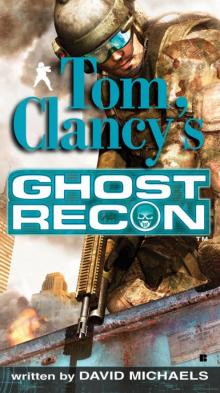 Ghost Recon gr-1
Ghost Recon gr-1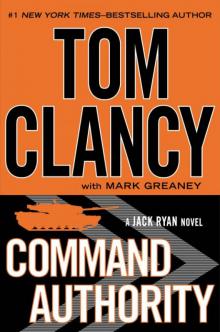 Command Authority jr-10
Command Authority jr-10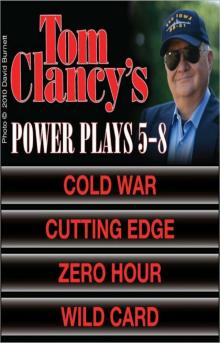 Tom Clancy's Power Plays 5 - 8
Tom Clancy's Power Plays 5 - 8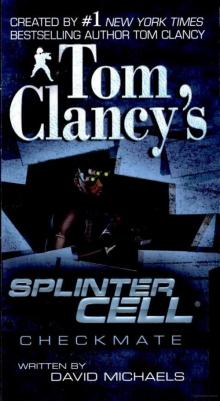 Checkmate sc-3
Checkmate sc-3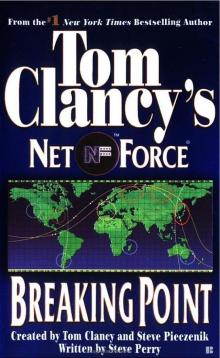 Breaking Point nf-4
Breaking Point nf-4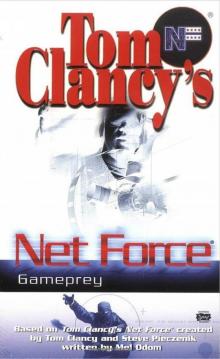 Gameprey nfe-11
Gameprey nfe-11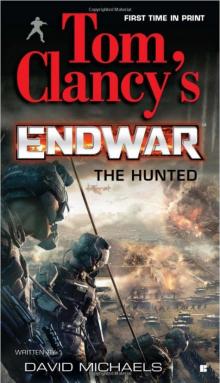 The Hunted e-2
The Hunted e-2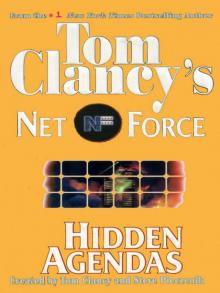 Hidden Agendas
Hidden Agendas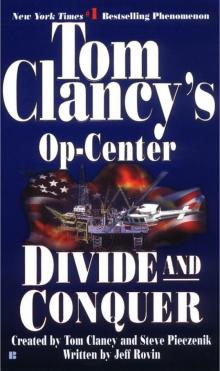 Divide and Conquer o-7
Divide and Conquer o-7